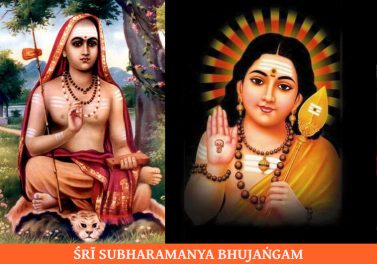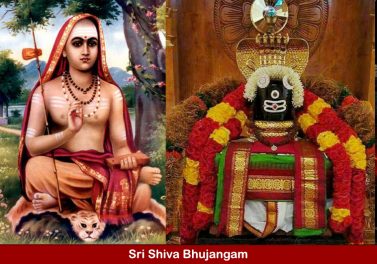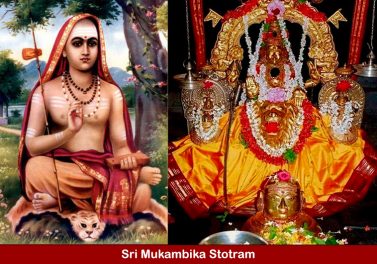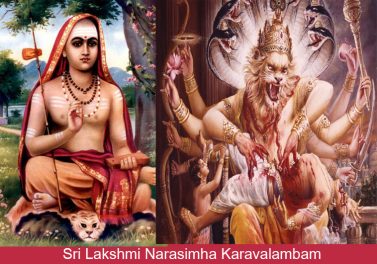Stranger’s Question
अयम् श्वपचोयमित्यपि महान् को अयम् विभेद भ्रमः ||
ayam śvapacoyamityapi mahān ko ayam vibheda bhramaḥ ||
Meaning
The Atman is the dearest and remains as the tide-less serene ocean of bliss and the indwelling essence in all of us. As this should be the perfect understanding of the truly Learned, how can such scornful discrimination possible, as one is a holy brahmin and the other a lowly dog-eater, when all is the undifferentiated Brahmam?
First Line:
pratyag = lucid and near; vastuni = thing (the indwelling essence); nis-taranga = the wave less and serene; sahaja aananda = naturally, innate, natural Bliss Absolute; avabodha = the perfect understanding; ambudhou = ocean like; vipro = one who is learned;
Second Line:
ayam = this (this hatred); shwa pacho = dog-eater (lowly outcaste); ayam iti api = this, and also; mahaan = learned (holy caste); ko ayam = by what reasons to; vibhedha bramah = discriminate in the Brahmam
Interpretation
The first question itself indicated that the Stranger is no ordinary mortal but a Self-realized soul. In the second question, this is further justified.
Here, in the first sentence, the essential nature of the Atman is defined. What is that which is the nearest to me? It is I. The propinquity of the Self is the closest. It is the Atman in the state of Sat-Chit-Ananda.
The search of the Self is the Self-inquiry.
To indicate the Self, Vedas suggest the method of negation as the initial approach. This is through the successive answers ‘not this, not this’ for the recursive question ‘who am I’. This will precipitate towards the identification of the Self.
Where does this take us?
Mind is a chain of thoughts. The embedding thread is the Self. As the thread is revealed between the beads in a chain, the Self is also revealed between the seeds of thoughts in the mind. The focused contemplation and meditation are only for the revelation of the Self. The beads in the hands of the spiritual aspirants and masters are only indicative of this concept, not as we think for the counting of meditative repetitions. If the mind is engaged with the counting where is the focused contemplation!
Here the Stranger, as he seems to be a Self-realized soul, surpasses these intermediate stages of inquiry and states the nature of the Self. It is the ocean of absolute bliss, still, with no vacillations or doubts.
The first line of his question indicates that the ultimate benefit of Atma-vidya is the realization of Atman as the serene and absolute bliss, ever existing as the dearest and closest to us, just waiting to be identified with.
Ananda or bliss is the only aim for all lives. In the worldly life, we do not understand what true happiness is and wander searching in vain for that fulfilling bliss. We fail to realize the true happiness within us.
In the second line, the Stranger ponders how come this wisdom is not reflected in the actions of these learned men? How can a Seer take on the external appearance, so as to treat one as lowly ‘dog-eater’ to be kept away from one who is holy ‘brahmin’?
By stating the nature of the Atman, the Stranger has questioned the wisdom or the lack of it for the discrimination of the command to keep him away.
Then the Stranger thinks, perhaps, the scornful command from the disciple came due to the misconception of the Atman. Is it possible that the Atman embodied in a dirty and tainted sheath also becomes dirty and tainted?
To clarify this, is his next question.







